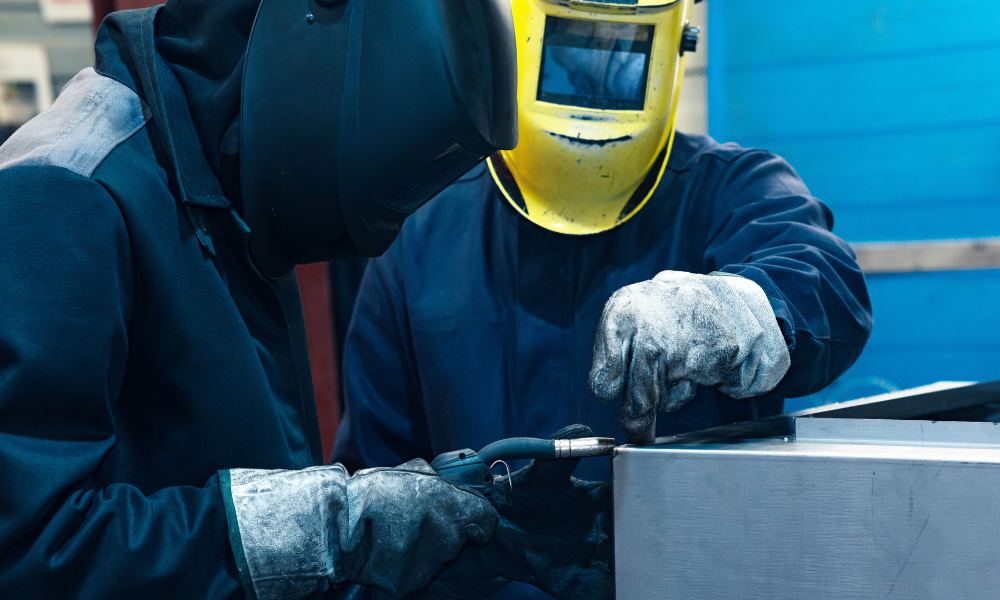Slips, trips, and falls among the most common workplace injuries

According to the International Labour Organization (ILO), 2.3 million workers experience accidents (injuries or occupational diseases) each year. In Canada, workers’ compensation boards (WCBs) collect information about accepted time-loss injuries, which gives us a broad picture of the number and type of injuries which occur. In 2019, Canada’s WCBs accepted a total of 271, 806 claims of lost time due to injury.
While some accidents are sadly inevitable, many are preventable – and many are common. Here are the 10 most common preventable workplace accidents that employers and safety professionals need to be aware of.
1. Slips, trips, and falls. Probably the most common of all workplace injuries, slips, trips and falls are also among the most preventable. These accidents can result from wet or sticky floors, uncleared areas or icy and snowy weather conditions. Everyone in the workplace needs to be on the lookout to ensure that floors are cleaned and cleared to avoid injuries that can sometimes be incredibly serious.
2. Explosions and fires. While not the most common of all workplace accidents, explosions and fires typically result in one of the highest casualty rates of all workplace accidents. Because of these risks, explosion and fire hazards need to be taken very seriously by employers, safety officers and workers alike. Training should be exhaustive, workers should be provided with the proper gear and in those cases where chemical fires are a risk, the workplace should be equipped with all necessary safety data sheets (SDSs).
3. Overexertion injuries. Do not overexert your workers. This seems like very basic advice, but overexertion injuries sadly remain very common. Ensure workers are well-rested, receive adequate breaks and are provided the right tools and equipment to be able to manage their tasks without overexerting their bodies (e.g. by pushing or lifting heavy objects).
4. Elevated falls. Falls from heights are a huge concern, especially in the construction sector. Working at heights training is mandatory is many jurisdictions throughout Canada. And working at heights isn’t just about wearing a harness, ensuring that a proper rescue plan is in place is crucial to prevent unnecessary injuries and even fatalities.
5. Being struck by or caught in moving machinery. Machines aren’t necessarily inherently dangerous, but things can certainly go awry very quickly if a worker isn’t wearing the right clothes (and clothing gets entangled in a machine) or lockout/tagout procedures aren’t taught or respected. In this case, firm knowledge of the machine’s functioning and wearing the correct protective clothing is key.
6. Vehicle related accidents. In Canada in 2020, there were 1,745 motor vehicle fatalities and 7,868 serious injuries. While these numbers are actually decreasing, driving accidents remain a cause of concern for workplaces throughout the country. Injuries can occur when workers are struck or run over by a moving vehicle, falling from a vehicle or get crushed or stuck by an overturned vehicle. The best thing that employers can do is empower its workers with the right information about driving safety through training or reminders about best practices (speeding, following signage, etc.).
7. Falling objects. Head trauma is a huge risk if a workplace hasn’t secured the area for falling objects or provided its workers with the correct PPE (hard hats are a life-saver). And even if a worker isn’t struck on the head, falling objects can cause huge damage to other parts of the body too. These injuries are especially common on construction sites or in warehouses.
8. Repetitive strain injuries (RSIs). Musculoskeletal disorders (MSDs) are a common concern in most workplaces. Even everyday office tasks can pose risks, with workers being at risk of developing conditions such as carpal tunnel syndrome or neck injuries. Employers may want to consult with an ergonomist to see what actions can be taken to avoid these common injuries.
9. Collisions. This doesn’t just mean big accidents like crashing into a car or a building, collisions can occur when workers walk into a chair, a wall, a window or other stationary items. These aren’t just silly accidents but can result in serious head, foot or hand injuries. Keep walkways clear, put up signage and ensure that workers aren’t too tired so as to steer clear of these very avoidable accidents.
10. Ergonomic injuries. In the same vein as RSIs, these injuries are linked to poor ergonomics and can occur in any type of workplace. From home offices to construction job sites, workers are at risk of injury if their work environment is not built in the correct way for their bodies. Improper lifting, for example, is an issue. Not giving enough breaks is another. Employers and safety officers need to invest in the right ergonomic equipment, and train workers on how to correctly manage tasks so as not to put workers unnecessarily at risk.





